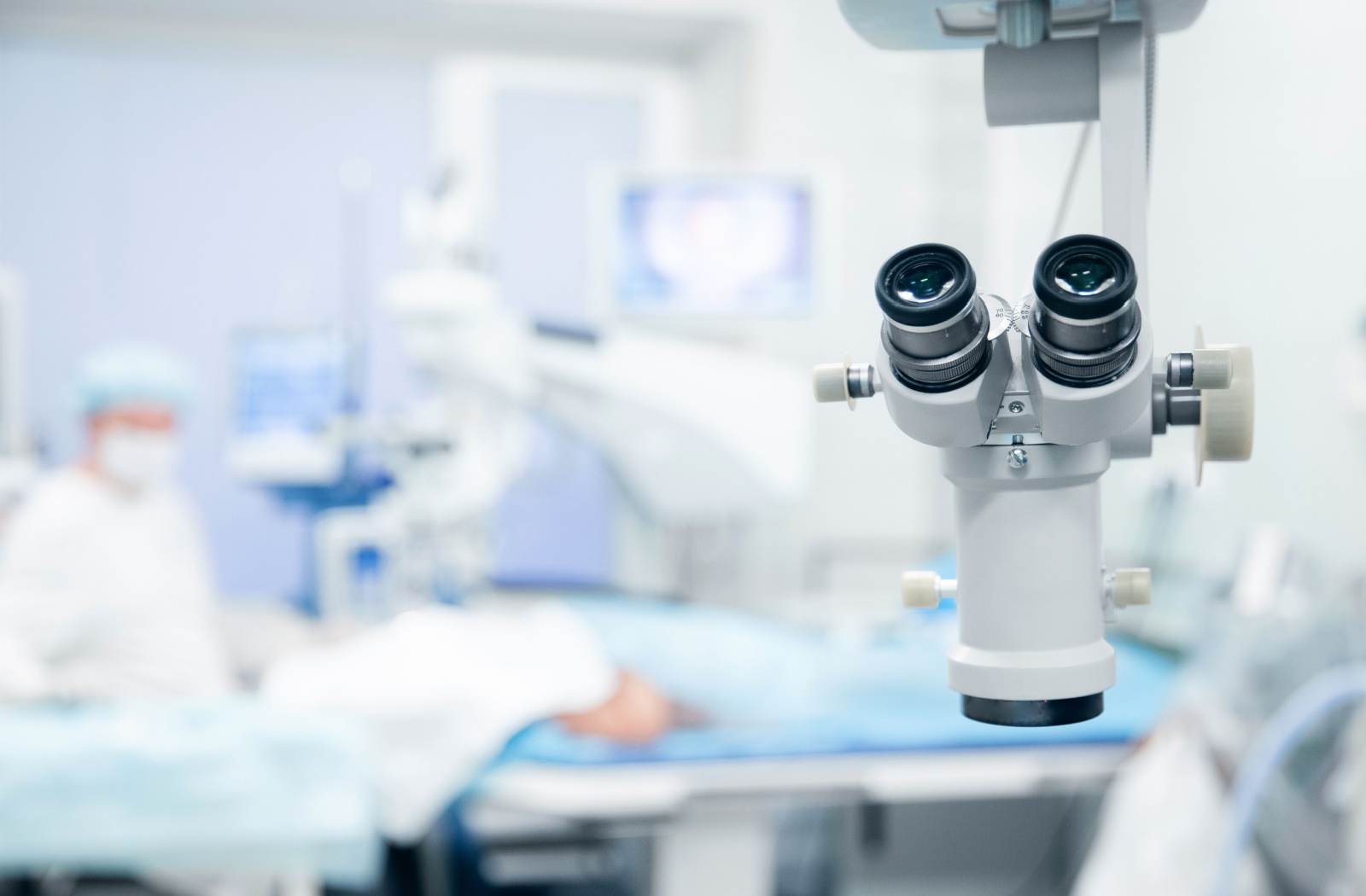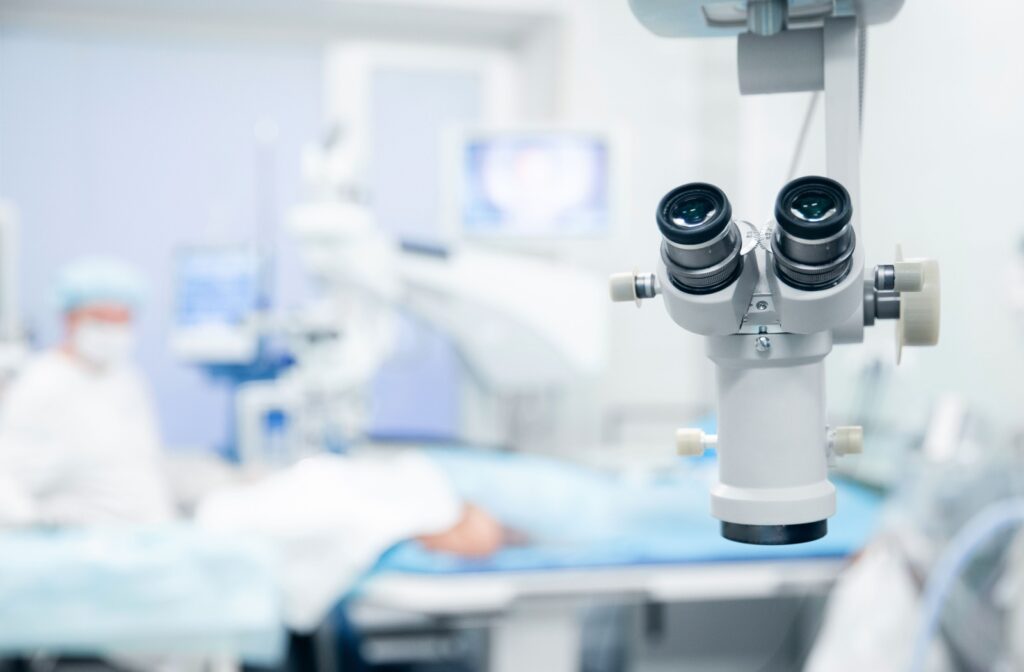In the world of vision correction, LASIK stands out as a top choice. Many prospective LASIK patients have underlying eye conditions, including dry eyes, that leave them questioning their eligibility.
Fortunately, you can still get LASIK if you have dry eyes; the condition just needs to be under treatment and control. Treating dry eye, regardless of whether or not LASIK is an option, can help alleviate many irritating symptoms causing problems on a day-to-day basis.
Understanding Dry Eyes
Dry eye disease is a common condition in which the eyes don’t produce enough or the right quality of tears, resulting in insufficient lubrication. Two main issues can contribute to dry eyes: poor quality tears or insufficient tear production. When tears are inadequate in quality or quantity, this can lead to red, irritated, and watery eyes.
Poor tear quality and insufficient tear production can affect your tear film, which keeps your eyes hydrated and comfortable. Your tear film has three distinct components, each with an important role to play:
- Mucin is the innermost layer of your tear film, responsible for helping the tears adhere to the surface of your eye.
- Water is in the middle layer of your tear film. This layer keeps your eyes hydrated.
- Oil is found on the outside of your tear film and is responsible for sealing the other two layers and preventing them from evaporating.
Multiple factors contribute to dry eyes, including age, gender, medications, and environmental conditions. Women, particularly those undergoing hormonal changes like menopause, are likelier to experience dry eyes. Certain drugs, such as antihistamines and antidepressants, are also known culprits of the condition.
Symptoms of dry eye can vary from mild to severe. Most commonly, they include a stinging or burning sensation, blurred vision, and sensitivity to light. Sometimes, paradoxically, your eyes may water excessively, which is the body’s way of trying to combat dryness.
Pre-LASIK Dry Eye Management
Before considering LASIK, managing dry eye symptoms is essential. Treatments aim to restore moisture and minimize discomfort, ensuring your eyes are in the best possible condition for surgery. Starting treatment well before your procedure allows time for your eyes to stabilize. Common treatment options include:
- Lubricating eye drops or artificial tears to help maintain eye moisture.
- Medications like cyclosporine or lifitegrast may be prescribed to reduce inflammation and stimulate tear production.
- Intense pulsed light (IPL) can help manage the symptoms of inflammation and meibomian gland dysfunction. By pulsing light onto your eyelids, your optometrist can help break down and melt away blockages in your meibomian glands that may affect the oil layer of your tear film.
- LipiFlow uses heat pulsations to serve the same purpose as IPL. The heat helps melt away blockages caused by meibomian gland dysfunction.
- MiboFlow uses constant heat to melt blockages in the meibomian glands. Most optometrists recommend multiple treatments with this device to manage dry eye symptoms.
Lifestyle changes can also significantly improve eye health. These include using a humidifier, wearing sunglasses outdoors, and taking regular breaks from digital screens to reduce eye strain. Nutritional supplements like omega-3 fatty acids are also thought to improve eye moisture.
LASIK & Dry Eye Prevalence
Laser eye surgery, also known as laser vision correction, is a group of different refractive surgery procedures that help mitigate refractive errors, including myopia, hyperopia, and astigmatism. Depending on the health of your eyes and your prescription, your eye care team may recommend one kind of treatment over another.
LASIK (laser-assisted in situ keratomileusis) eye surgery is America’s most common laser vision correction. During the procedure, your ophthalmologist creates a flap in your cornea, providing access to the corneal stroma.
Certain factors may prevent you from having laser eye surgery, so a consultation is needed before the procedure. Aspects assessed include corneal thickness, current or previous ocular or systemic diseases, dry eyes, and pupil size.

Dry eyes aren’t uncommon among LASIK patients. Post-LASIK, some patients may experience increased dryness as part of the healing process (research indicates that up to 30% of people undergoing LASIK may experience dry eye symptoms afterward. However, these symptoms are often temporary and tend to resolve within a few months).
The LASIK Evaluation Process
It’s crucial to have a thorough pre-surgery evaluation to assess the severity of your dry eye. This helps determine your candidacy for LASIK and allows your eye doctor to create a tailored treatment plan to manage symptoms. During the evaluation, your eye doctor will assess the health of your eyes, focusing on tear production and quality. They’ll perform tests to understand the root cause of your dry eye symptoms.
Pre-operative assessments generally include a tear film test to measure tear production and a detailed examination of the corneal surface. Advanced imaging techniques might be used to analyze the thickness and quality of the tear film.
Your eye doctor will also discuss your medical history, lifestyle, and expectations. This information helps them tailor recommendations and ensure you’re well informed about the risks and benefits of LASIK, particularly about dry eyes.
Alternatives to LASIK for Dry Eye Sufferers
For some, LASIK might not be the best option due to the severity of dry eye symptoms. Fortunately, alternative vision correction procedures are available. These options are designed to cater to those who may not be ideal candidates for LASIK.
- Photorefractive keratectomy (PRK) doesn’t involve creating a corneal flap, making it suitable for individuals with thinner corneas or those prone to dry eyes. Although the recovery time is longer than that of LASIK, PRK yields similar results.
- Implantable contact lenses (ICLs) are reversible lenses that are placed before the natural lens. They can be an excellent choice for those who struggle with dry eyes and are seeking vision correction.
Regardless of what you ultimately choose to fix your vision issues, a comprehensive evaluation and tailored treatment plan are essential. By working closely with your eye care professional, you’ll be better equipped to achieve your vision correction goals while maintaining optimal eye health.
At Hazleton Eye Specialists, we know that navigating the complexities of LASIK and dry eyes can seem daunting, but we’re here to help you make informed decisions that align with your needs and lifestyle. Contact us today to see how we can help you manage your dry eyes so you can better qualify for LASIK.



